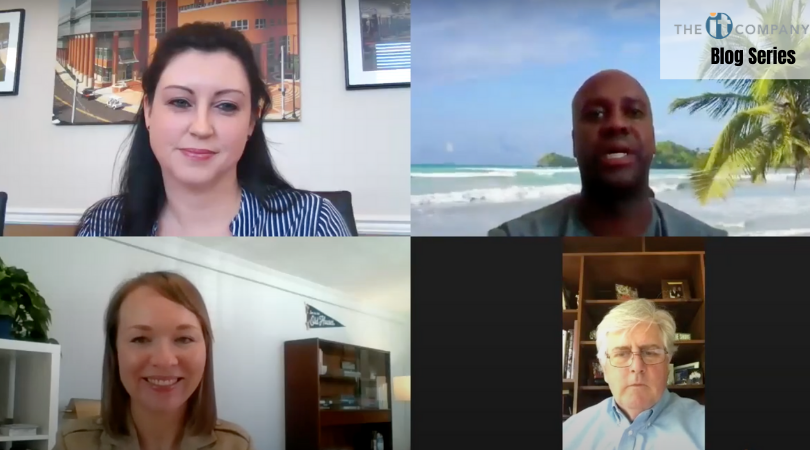Email is Dead
Do you finish responding to one email, just to realize you have two new ones waiting for you? Does it drive you crazy to see the blue number of unread messages beside your inbox, or a red icon on your phone? Do you get anxiety about the number of emails in your inbox when you have a day off, or a week vacation? Have you ever considered how much time of your day goes in to reading, responding, and sending emails?
According to the Washington Post, “We spend an average of 4.1 hours checking our work email each day. That’s 20.5 hours each week, more than 1,000 hours each year, more than 47,000 hours over a career.” With over half of a work day being devoted to emails, it’s becoming impossible to get real work accomplished. At The IT Company we have virtually eliminated internal emails among our team, increasing productivity while at the same time improving communication and employee engagement. “I might get 6 – 10 internal emails a day now, versus 75 – 100 before. I couldn’t do it the old way anymore.” – Paul Sponcia, CEO of The IT Company.
So, how did we do it? We bought into technology, process and training and created a new way to communicate and collaborate that is mostly outside of email. Here are three things we did that changed the dynamic of how we use email, and improved our productivity, engagement and communication AND allowed us to become a growing virtual workforce.
This would not be successful if it didn’t have complete buy-in from the top. Paul, our CEO, drove the idea and ensured that everyone was on board. He built a culture that understood when and how to use the tools or email, versus other tools. He also was vigilant to ensure people were eliminating email from normal internal communications.
“I instinctively was realizing that we were wasting a tremendous amount of time and energy in emails, many of which didn’t need to even come to us. At the same time I realized that a lot of important information, institutional knowledge, problem solving, information and history was getting locked up in individual peoples mailboxes spread out amount the whole team. I wanted this information to be public and available to the various stakeholders who would need it, when needed, and not locked up in email that eventually would, and could, be deleted or destroyed. These two things drove me to focus our organization and culture on a new way and new processes.”
It’s a lot like meetings. The people who need to be involved and can contribute should be involved and everyone else should continue to focus on what they need to do. Same thing with email, but now with collaboration. Bring in the right people, focus the teams and groups, and reduce the clutter and unneeded chatter.
People love to create groups to send emails to 5 to 10 people. These “Distro Groups” have long been the de facto way to send information to large numbers of people at one time, but they end up being a tough to read dialogue with little or no flow. The outcome is an unmanageable conversation, that could have valuable data locked up in email.
They are also a crutch, and when they exist you and your people will use them because it is easy, but we’ve learned that just because it is easy doesn’t mean it is good or simple. As a matter of fact, doing something simple can be really hard to do and doing something the complicated way can seem easy. It’s inverse, but it’s true. When we eliminated the distro we forced the conversation to move to our communication and collaboration tools, either in micro teams or in larger corporate conversations. Now when someone wants to announce something company-wide they do it in Yammer, which is like an internal Facebook platform for business. When we need to work in micro teams on specific projects, or as a sales and marketing group (like putting this blog post together) we go over to Microsoft Teams where we can work together, share documents, have conversations, etc.
The beauty of all of this is it is available, searchable and focused on those who need it but also available to those who may benefit from it in the future.
Programs like Microsoft’s Office365 platform with Teams and Yammer, and other products such as Slack, EverNote, etc. are becoming common place in large and small offices. Whether you have one office, or multiple locations, these types of programs are efficient and effective, but you have to go back to point one and point two. We, as a technology company, even struggled to move the needle at first and our productivity dropped as we learned the new tools. However, within three months we were way ahead of the way we were.
Our team can communicate from anywhere. We have integrated our phone system completely into the platform, so we are no longer confined to desk phones, the office location, or costly upgrades and moves. We have integrated video conferencing for remote workers, allowing employees to work from home a day or two a week, which has increased their productivity and effectiveness. We are putting information in the places where it can be accessed by the team, indexed and searched in the organization and used to improve communication and customer service. We take advantage of the mobile apps available for our Apple devices to work anywhere, to access documents, to take, make and transfer calls, and be available when we are needed without constraints.
As an organization we have significantly reduced our email load, we have improved our productivity, we are more efficient and more effective and we are even rethinking the office of the future and how we will work together in smaller spaces, which will allow us to be more effective and productive with less cost to the organization.
-1.png?width=150&height=70&name=The%20IT%20Company_Final%20(1)-1.png)


